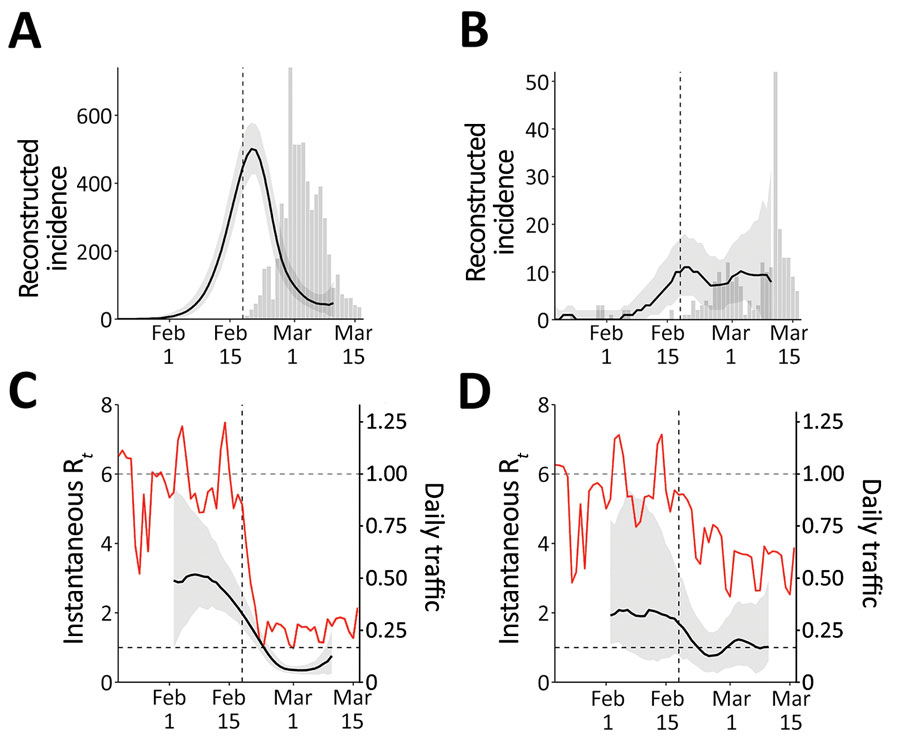Volume 26, Number 11—November 2020
Dispatch
Potential Role of Social Distancing in Mitigating Spread of Coronavirus Disease, South Korea
Figure 2

Figure 2. Comparison of reconstructed coronavirus disease incidence proxy and instantaneous reproduction number Rt in Daegu (A, C) and Seoul (B, D), South Korea. The instantaneous reproduction number Rt reflects transmission dynamics at time t. Black lines and gray shading represent the median estimates of reconstructed incidence (A, B) and Rt (C, D) and their corresponding 95% credible intervals. Gray bars show the number of reported cases. Red lines represent the normalized traffic volume (daily traffic, 2020, divided by the mean daily traffic, 2017–2019). Vertical dashed lines indicate February 18, 2020, when the first case was confirmed in Daegu.
Page created: August 10, 2020
Page updated: October 19, 2020
Page reviewed: October 19, 2020
The conclusions, findings, and opinions expressed by authors contributing to this journal do not necessarily reflect the official position of the U.S. Department of Health and Human Services, the Public Health Service, the Centers for Disease Control and Prevention, or the authors' affiliated institutions. Use of trade names is for identification only and does not imply endorsement by any of the groups named above.